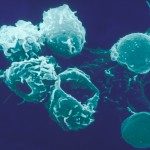Link to Pubmed [PMID] – 34028841
Link to DOI – 10.1111/imr.12979
Immunol Rev 2021 Jul;302(1):104-125.
Macrophages are an integral part of all organs in the body, where they contribute to immune surveillance, protection, and tissue-specific homeostatic functions. This is facilitated by so-called niches composed of macrophages and their surrounding stroma. These niches structurally anchor macrophages and provide them with survival factors and tissue-specific signals that imprint their functional identity. In turn, macrophages ensure appropriate functioning of the niches they reside in. Macrophages thus form reciprocal, mutually beneficial circuits with their cellular niches. In this review, we explore how this concept applies to the spleen, a large secondary lymphoid organ whose primary functions are to filter the blood and regulate immunity. We first outline the splenic micro-anatomy, the different populations of splenic fibroblasts and macrophages and their respective contribution to protection of and key physiological processes occurring in the spleen. We then discuss firmly established and potential cellular circuits formed by splenic macrophages and fibroblasts, with an emphasis on the molecular cues underlying their crosstalk and their relevance to splenic functionality. Lastly, we conclude by considering how these macrophage-fibroblast circuits might be impaired by aging, and how understanding these changes might help identify novel therapeutic avenues with the potential of restoring splenic functions in the elderly.

